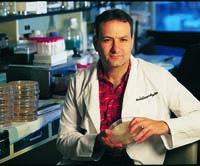
Last June, the US Supreme Court ruled in the case of Association for Molecular Pathology v Myriad Genetics that naturally occurring genes may not be patented. The decision struck down Myriad’s stranglehold on the market for BRCA 1 and 2 gene testing—emboldening a number of major labs to compete in that market—but it also opened the floodgates for cross-litigation that may take several years to play out.
In November, amid some fanfare from healthcare topsiders, FDA granted market clearance to Illumina’s MiSeqDx analyzer, the first next-generation sequencer to be approved for diagnostic applications. But labs seeking to develop their own tests for use on the instrument shouldn’t expect to have a free hand. In a New England Journal of Medicine Perspective on the NGS clearance milestone, National Institutes of Health Director Francis S. Collins, MD, PhD, and FDA Commissioner Margaret A. Hamburg, MD, observed that “this marketing authorization of a non-disease-specific platform will allow any lab to test any sequence for any purpose. Thus, putting in place an appropriate risk-based regulatory framework is now critical to ensure the validation and quality of tests … developed in-house by clinical laboratories.”
And finally, on the last day of the year, the Institute of Medicine released Genome-Based Diagnostics: Demonstrating Clinical Utility in Oncology, the summary of a 2012 workshop convened to foster stakeholder dialogue about the development and use of molecular diagnostics for patients with cancer. As if to emphasize the hurdles still ahead, the new publication recalls an unfulfilled “blue sky” proposal by Lee Newcomer, MD, senior vice president for oncology, genetics, and women’s health with UnitedHealthcare:
A provisional period of several years during which payors cover part of the costs of a molecular diag- nostic’s use would allow additional evidence to be gathered, after which the test could be accepted only if it produces substantial improvements in health outcomes.
In this issue’s cover story, CLP looks at some of the characteristics of molecular diagnostics that are helping to increase adoption in a variety of fields. And in the InsideTrack interview, Illumina’s Gregory F. Heath, PhD, discusses the company’s expectations for the future of next-generation sequencing. The coming year may yet present many legal, regulatory, and reimbursement obstacles to the realm of molecular diagnostics. But in the meantime, recent achievements are worth a small celebration.
Steve Halasey
Chief Editor, CLP
[email protected]
(626) 219-0199





